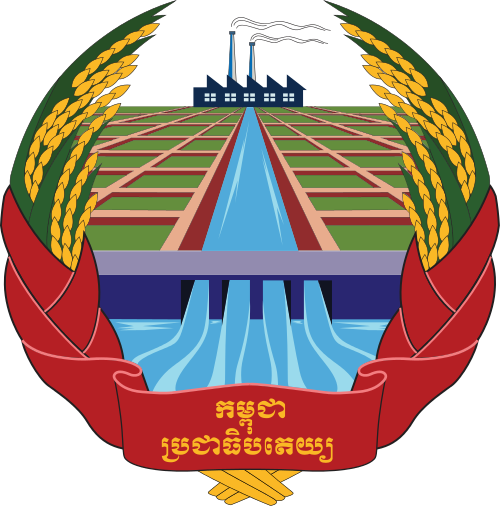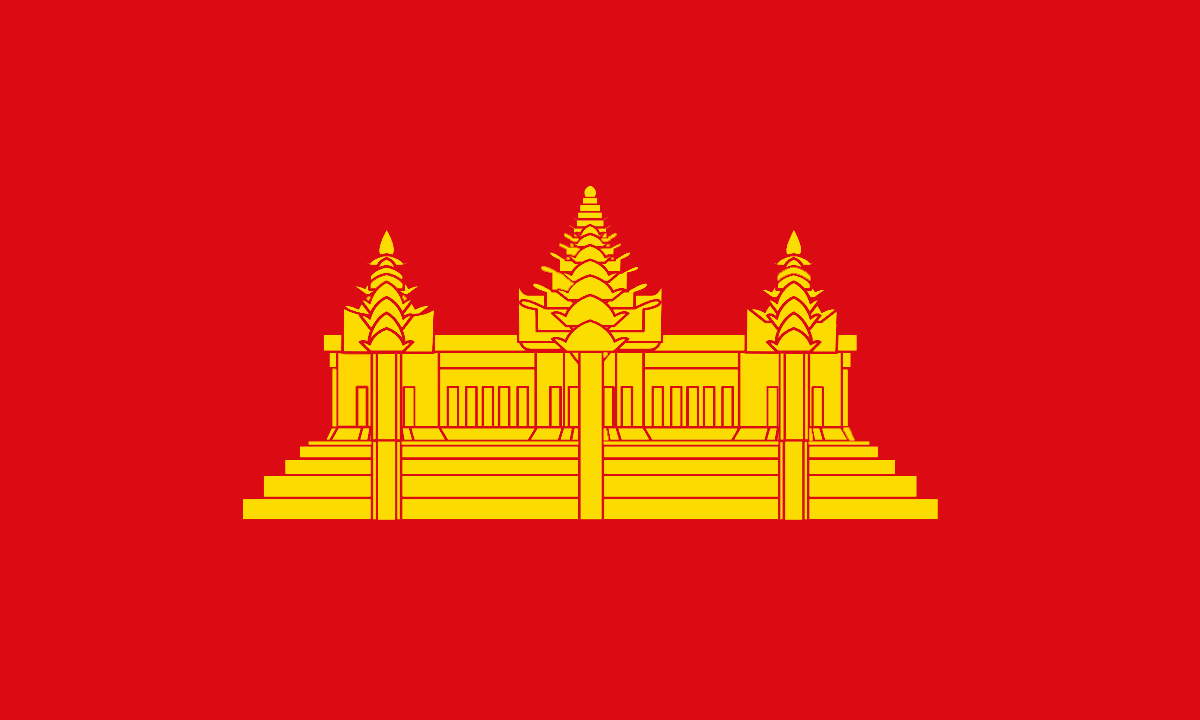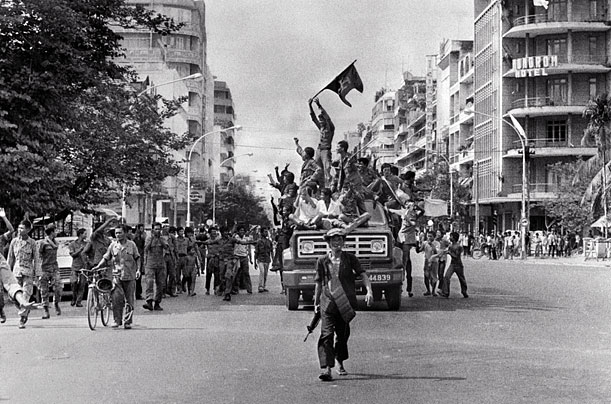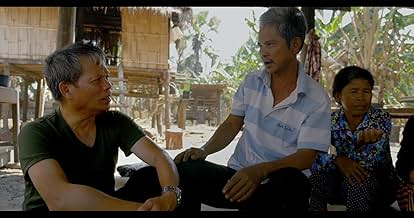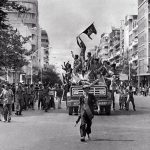The National Flag of Democratic Kampuchea, adopted in 1975 and used until the regime’s fall in 1979, symbolizes the Khmer Rouge’s radical vision for Cambodia. The flag’s design and colors reflect the party’s ideological beliefs and aspirations for a new society. This page delves into the history, symbolism, and significance of the flag during the period of Democratic Kampuchea.
Historical Context
When the Khmer Rouge came to power on April 17, 1975, they sought to establish a new communist regime in Cambodia, officially naming it Democratic Kampuchea. The national flag was one of the first symbols of this new government, representing their revolutionary ideals and commitment to agrarian socialism.
Design and Symbolism
The National Flag of Democratic Kampuchea featured a red background with a blue horizontal stripe at the top and a white silhouette of Angkor Wat at its center.
Elements of the Flag:
- Red Background:
- The red color symbolizes the blood of the Khmer people, representing their struggles and sacrifices during the civil war and the fight against perceived oppression.
- It also reflects the Khmer Rouge’s commitment to the revolutionary cause and their aspirations for a communist society.
- Blue Stripe:
- The blue horizontal stripe represents the prosperity and wealth the Khmer Rouge aimed to achieve through their radical policies.
- It signifies hope for a brighter future for Cambodia, as envisioned by the regime.
- Silhouette of Angkor Wat:
- The inclusion of Angkor Wat, a symbol of Cambodia’s rich cultural heritage, emphasizes the Khmer Rouge’s connection to Khmer identity and nationalism.
- The temple complex represents the glory of Cambodia’s past, and its depiction on the flag was intended to evoke pride and a sense of unity among the Cambodian people.
Adoption and Use
The flag was officially adopted shortly after the Khmer Rouge seized power and became a prominent symbol of the regime. It was displayed in government buildings, schools, and during national celebrations. The flag was intended to embody the Khmer Rouge’s commitment to transforming Cambodia into a pure agrarian socialist state.
During this period, the flag also served as a tool for propaganda, reinforcing the regime’s ideological narratives. It was used to promote the idea of a united Cambodia under the leadership of the Communist Party of Kampuchea (CPK).
The Flag’s Legacy
The National Flag of Democratic Kampuchea ceased to be used after the fall of the Khmer Rouge in January 1979, when Vietnam invaded and established a new government. The flag came to symbolize not just the aspirations of the Khmer Rouge but also the immense suffering and tragedy experienced during the regime’s rule.
Modern Reflections
Today, the flag is often referenced in discussions about the history of Cambodia and the Khmer Rouge. It serves as a reminder of the past, particularly the drastic shifts in ideology and governance that occurred during this period. It is a topic of interest for historians and scholars studying the impact of totalitarian regimes and their symbols.
Conclusion
The National Flag of Democratic Kampuchea was more than just a national emblem; it encapsulated the Khmer Rouge’s revolutionary spirit and vision for Cambodia. While it is a symbol of a regime that caused immense suffering, understanding its design and significance is crucial for grasping the complexities of Cambodian history during the late 20th century. As Cambodia continues to recover and reflect on its past, the legacy of the National Flag of Democratic Kampuchea remains an essential part of that narrative.
